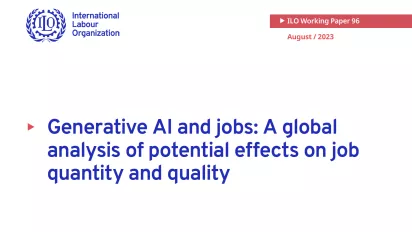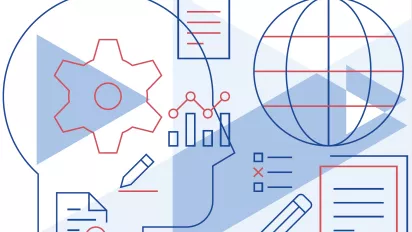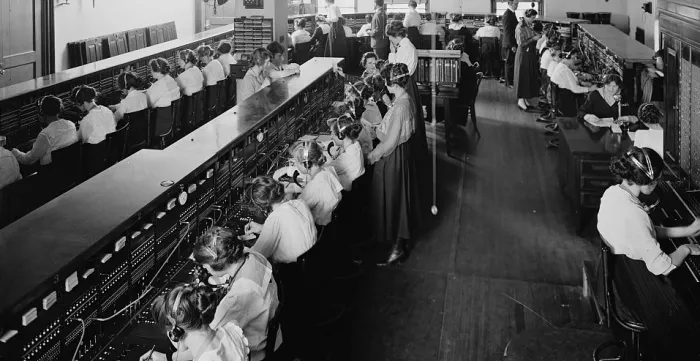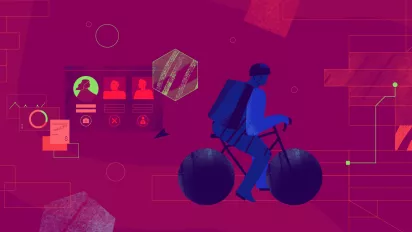
Topic portal
Artificial intelligence
In the world of work, there are two distinct types of application of AI technology in the workplace. The first is directed at automating tasks that workers perform; the second is to use AI-based analytics and algorithms to automate managerial functions – or what is commonly referred to as “algorithmic management”.
When AI is used to automate tasks, it doesn’t necessarily lead to redundancies, as the technology can also complement human labour when certain tasks are automated. Whether technological adoption leads to automation (job loss) or augmentation (job complementarity) depends on the centrality of the automated task to the occupation, how the technology is integrated into work processes and management’s desire to retain humans to perform or oversee some of the tasks, despite automation’s potential. As AI transforms occupations, a workforce equipped with necessary skills in machine learning, data science, and AI ethics is crucial for harnessing its potential.
In addition to the potential effects on workers, AI’s integration into the workplace can also have consequences for organizational performance, including productivity, with spillover effects on economic performance. For this reason, unequal access to the technology stemming from infrastructure bottlenecks, skill deficiencies or simply the cost of the technology can widen existing productivity divides between countries as well as between large and small or micro enterprises.
Key resources

Meeting
Can we have pro-worker AI?

ILO Working paper 96
Generative AI and Jobs: A global analysis of potential effects on job quantity and quality

ILO Working Paper 121 - Joint publication ILO-World Bank
Buffer or Bottleneck? Employment Exposure to Generative AI and the Digital Divide in Latin America
News and articles

AI and Work
Minimizing the negative effects of AI-induced technological unemployment

ILO launches new AI and Digital Economy online knowledge hub
Ongoing and upcoming events
Research Seminar
The hidden human labour powering AI: Introducing the Fairwork Action Research Project

How might generative AI impact different occupations?

Assessment of potential jobs’ exposure to generative AI, by occupational categories

What is the possible effect of generative AI on employment?

Percentage of jobs potentially affected by Generative AI, by country-income groups.
Global AI workforce
The development and deployment of AI systems requires a vast array of professional skills such as computer scientists and machine learning experts, but also professionals who tag, classify, clean and validate data used in the training of AI systems, as well as in other areas of the digital economy, including e-commerce and social media platforms.
Though there are no exact figures on the numbers of workers involved in this work – estimates are in the tens of millions – what is clear is the critical role that that this form of invisible labour plays in ensuring that the “magic” of AI works as planned.
The work is performed either on microtask or crowdsource platforms or in business processing outsourcing (BPO) companies, with many of the workers located in the Global South. As AI becomes increasingly embedded in our lives, it is crucial to acknowledge and address this human element that is central for the smooth function of AI systems. By ensuring fair labour practices, promoting transparency, and valuing the contributions of these invisible workers, we can build a more ethical and sustainable AI ecosystem.
Event replay
AI Labour Disclosure Initiative: Recognizing the social cost of human labour behind automation
Event replay
Behind the AI Curtain: The Invisible Workers Powering AI Development
Report
Mind the AI Divide: Shaping a Global Perspective on the Future of Work
Publications
Research Brief
Rethinking Production Processes with AI and avoiding the Innovator’s Dilemma
ILO Working Paper 121 - Joint publication ILO-World Bank
Buffer or Bottleneck? Employment Exposure to Generative AI and the Digital Divide in Latin America
United Nations and International Labour Organization report
Mind the AI Divide: Shaping a Global Perspective on the Future of Work
See also

Observatory on AI and Work in the Digital Economy

Topic portal
Algorithmic management in the workplace

Topic portal
Digital labour platforms

Topic portal
Workers’ personal data